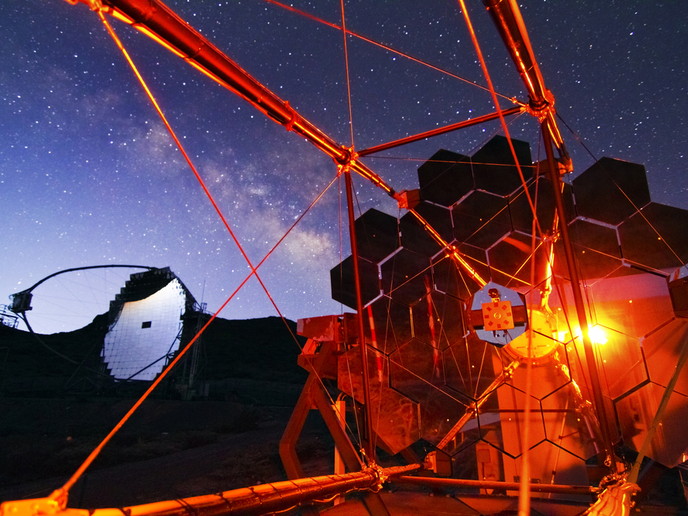Pushing stargazing to the limits with the world’s largest gamma-ray observatory
To discover the secrets of exploding stars or black holes, scientists have been focusing on the gamma rays they emit. However, gamma rays don’t pass through the Earth’s atmosphere, making them difficult to study. To find what high-energy process a gamma ray originates from, scientists have been observing the cascades of secondary particles produced when these rays hit the atmosphere. The cascades – which create blue flashes of light called Cherenkov light after the Russian physicist who discovered them – only last a few billionths of a second and are invisible to the naked eye. What’s more, they’re very rare, producing one gamma-ray photon per m2 yearly (for bright sources) or per century (for faint sources). In order to improve their chances of capturing these cascades, a consortium of 1 420 researchers from more than 200 institutes in 31 countries is developing a ground-based gamma-ray observatory called the Cherenkov Telescope Array (CTA). The observatory, which has also been supported by two EU-funded projects, CTA-PP and CTA-DEV, is expected to be the world’s largest ground-based gamma-ray detection facility once completed. The telescope array will observe the sky at a higher energy resolution than ever before. According to the project website(opens in new window), it will also have “unprecedented accuracy and will be 10 times more sensitive than existing instruments.” This will allow it to trace the gamma radiation emitted by supernovas and large black holes with much greater precision than current gamma-ray detectors. Observatory features The CTA will consist of 118 telescopes split between two sites: Paranal, Chile, in the southern hemisphere, and the island of La Palma, Spain, in the northern hemisphere. It will be used to explore the most extreme phenomena in the universe and gain insight into the role that high-energy particles play in the evolution of cosmic systems. To do this, the project team will be deploying three classes of telescopes – small-, medium- and large-sized – to identify gamma rays in the energy range of 20 GeV to 300 TeV. Forty medium- and eight large-sized telescopes will be installed in both the southern and northern hemispheres. The project’s 70 small-sized telescopes, which are the most sensitive to high-energy gamma rays, will only be used on the southern site. The prototype Schwarzschild-Couder Telescope (SCT) developed for the CTA project detected its first Cherenkov light on 23 January, less than a week after its inauguration. The dual-mirrored medium-sized telescope will be covering the 80 GeV to 50 TeV energy range. “The first of its kind in the history of gamma-ray telescopes, the SCT design is expected to boost CTA performance towards the theoretical limit of the technology,” explained Prof. David Williams of CTA project partner University of California, Santa Cruz, in an announcement(opens in new window) posted on the project website earlier this year. What lies ahead? While CTA-DEV (Cherenkov Telescope Array: Infrastructure Development and Start of Implementation) and CTA-PP (The Preparatory Phase for the Cherenkov Telescope Array (CTA-PP)) have both concluded, the observatory is only now beginning its exciting journey of discovery. The first pre-production telescopes will be installed by 2020 and the observatory will begin operation in 2022. The observatory, which will be the first of its kind to serve as an open resource of astronomical data for astronomers and particle physicists worldwide, is expected to be completed by 2025. For more information, please see: CTA-DEV/CTA-PP project website(opens in new window)
Countries
Germany



